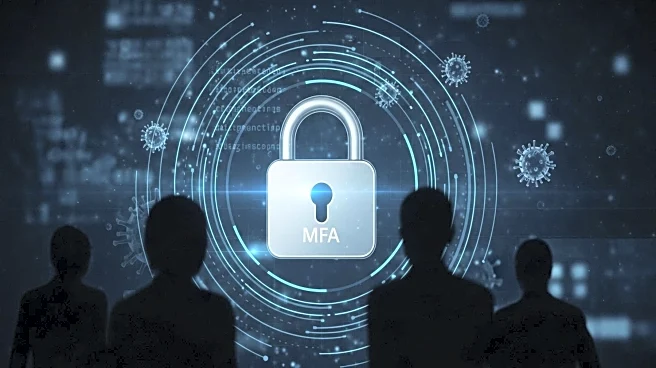What's Happening?
A new phishing campaign has been identified, utilizing the Salty2FA phishing-as-a-service framework to bypass multi-factor authentication (MFA) protections. According to cybersecurity firm Ontinue, the campaign employs advanced evasion tactics, including intercepting verification methods and rotating subdomains. The attackers use trusted platforms like Cloudflare Turnstile to cloak their activities, making it difficult to distinguish between legitimate and fraudulent traffic. The campaign targets Microsoft 365 users worldwide, simulating various MFA flows such as SMS, authenticator apps, push notifications, and hardware tokens, while dynamically applying corporate branding based on the victim's email domain.
Why It's Important?
The discovery of Salty2FA highlights the growing sophistication of phishing attacks, which now resemble enterprise-grade operations. This poses significant risks to businesses and individuals relying on MFA for security. The ability to mimic legitimate sites and intercept authentication processes undermines confidence in MFA systems, potentially leading to increased data breaches and financial losses. Organizations must enhance their security measures beyond static checks, incorporating sandboxing and run-time inspection to detect suspicious activities. User awareness and education remain crucial in combating these advanced phishing tactics.
What's Next?
Cybersecurity experts recommend shifting security strategies to include more dynamic and real-time inspection methods to counteract the evolving tactics of phishing kits like Salty2FA. Organizations may need to invest in advanced security infrastructure and training programs to better prepare employees against such threats. Continuous monitoring and adaptation of security protocols will be essential to protect sensitive information and maintain trust in digital authentication systems.
Beyond the Headlines
The emergence of Salty2FA raises ethical concerns about the proliferation of phishing-as-a-service platforms, which enable attackers to conduct sophisticated campaigns with minimal technical expertise. This trend could lead to an increase in cybercrime, necessitating stronger regulatory measures and international cooperation to curb the availability and use of such tools.











